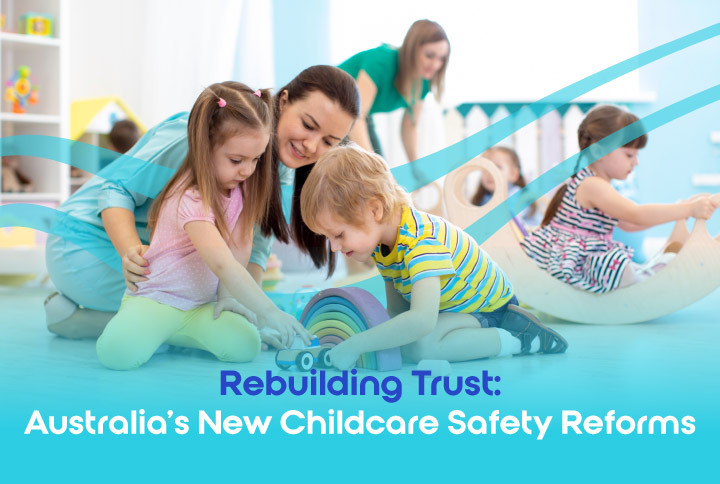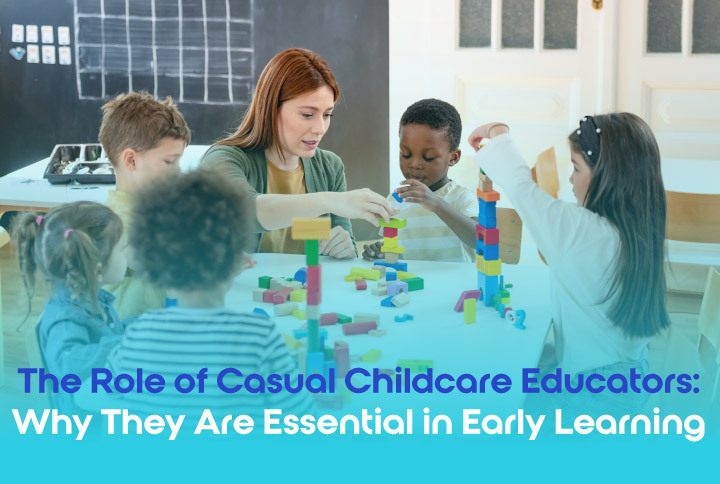.png)
Across the childcare sector, services face a variety of challenges and pain points in their processes and daily operations. Trying to navigate these challenges can be overwhelming, but addressing them effectively is crucial to ensuring the quality of care remains high. In this blog, we’ll explore three common pain points childcare services face and provide strategies to help mitigate them.
#1 - Assessment & Rating periods
The purpose of Assessment and Rating (A&R) is to drive the implementation of the National Quality Standards (NQS) through centre self-assessment and a national body assessment. It focuses on continuous improvement, engaging parents, and providing information to increase the quality of care provided by individual centres. However, the A&R period can be stressful for services, as it requires meticulous attention to every aspect of care.
The challenges of managing A&R
For many childcare centres, balancing the demands of daily operations while preparing for an A&R assessment can be overwhelming. Educators often feel pressure to meet stringent requirements while also maintaining high-quality care and education for children. The detailed documentation, continuous reviews, and adherence to policies can consume significant time and resources, leaving staff feeling stretched. This balancing act makes it difficult for centres to keep up with A&R while ensuring that the children in their care continue to receive the attention and engagement they deserve.
Practical tips for A&R
Here are some practical tips for addressing key quality areas in the A&R process. Focusing on these areas and being aware of the common shortfalls will help ensure your service meets and exceeds the NQS standards.
|
Quality area |
Common shortfall |
Preparation tips |
|
Educational Program and Practice |
|
|
|
Health and Safety |
|
|
|
Physical Environment |
|
|
|
Staffing Arrangements |
|
|
|
Relationships with Children |
|
|
|
Collaborative Partnerships with Families and Communities |
|
|
|
Governance and Leadership |
|
|
A clear focus on these areas, combined with thorough preparation, ensures that your centre not only meets but exceeds NQS standards during A&R periods.
#2: Staff recruitment & retention
Staff recruitment and retention remain some of the most persistent challenges in the childcare sector. High turnover rates, paired with the need to maintain staff ratios, can make staffing a significant pain point. Childcare services often struggle to attract and keep qualified educators, especially as demand increases.
The challenges of staffing shortages
Earlier this year, Z Staffing conducted groundbreaking research in our State of Staffing Survey, revealing critical insights into how severely labour shortages have impacted services. These shortages have been felt across the entire sector, making it increasingly difficult for centres to maintain smooth operations. Late last year, the Australian Children’s Education and Care Quality Authority (ACECQA) revealed that nearly 10% of childcare services nationwide required staffing waivers simply to stay open.
These shortages not only disrupt the day-to-day running of centres but also pose significant risks to the safety and wellbeing of children. ACECQA also reported a sharp rise in cases of inadequate supervision and failures to protect children from harm and hazards, which are directly linked to understaffing. This puts additional strain on existing staff, often leading to burnout and even more turnover, perpetuating a challenging cycle.
How to manage staffing challenges
The Federal Government recently unveiled a host of changes to educator wages, investing $3.6 billion over two years. Introducing a pay rise for childhood educators may help reduce the high turnover rates and stabilise the sector. This long-term plan is excellent, but to help fill gaps, Z Staffing’s casual childcare staff offer a reliable solution. We provide skilled and vetted casual childcare educators who can step in when needed, ensuring your childcare centre maintains compliance with staff-to-child ratios without compromising on the quality of care. Z even includes an option to convert these roles to permanent for a small fee. To ease the cost burden of this further, we have also partnered with Procuret. This partnership allows centres to convert Z Staffing casual educators into permanent roles more affordably, ensuring you can retain high-quality staff without overstretching your budget.
#3: Managing parent expectations
Parents are a critical part of childcare and managing their expectations is essential to running a successful early learning centre. Parents want to know that their children are in a safe, nurturing, and educational environment, and they also expect to be kept informed about their child’s day.
Creating welcoming spaces
The key to managing parent expectations starts with making them feel welcome and included. Many parents are busy professionals, and the decision to enrol their child in childcare is often driven by necessity. It’s important to ensure they feel confident their child is in the best hands. Simple gestures like warm greetings at drop-off and pick-up times can go a long way in building trust. Branching out further with breakfast and coffee stations for drop-off time goes a long way toward creating a welcoming childcare community. Ensuring that events, like Christmas or Mother’s Day, are hosted at times where families are able to attend will also help parents feel included and wanted in your community.
Communication is key
Effective communication is one of the most crucial factors in managing parent expectations. Aside from regular parent-educator meetings, parents want to stay informed about their child’s progress, activities, and wellbeing, but they also value convenience. Using software like Kinderm8, which seamlessly integrates with Z Staffing, allows centres to maintain open lines of communication while keeping information organised. Daily updates, photos, and important notices can be shared with parents in real-time, ensuring they feel connected to their child’s day without being overwhelmed.
Childcare staffing made easy with Z
Childcare services face many challenges, from navigating the A&R process to managing staffing and parent expectations. By focusing on these three pain points and leveraging tools like Z Staffing, centres can streamline operations, improve communication, and create a supportive environment for both children and parents.
About Z Staffing
When running or managing a childcare centre, you must ensure you have the correct amount of childcare educators to children to remain in ratio. With industry-wide worker shortages, planned holidays by permanent workers, and sudden staffing issues due to sick leave, it can be a challenge to ensure you have enough staff available.
Back to the top
More articles from Z

Rebuilding Trust: What Australia’s New Childcare Safety Reforms Mean for Parents,...

The Role of Casual Childcare Educators: Why They Are Essential in Early Learning
.png)
.png?width=394&height=112&name=Logo%20(5).png)
